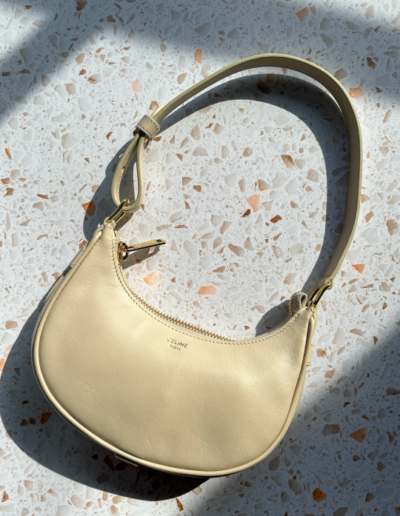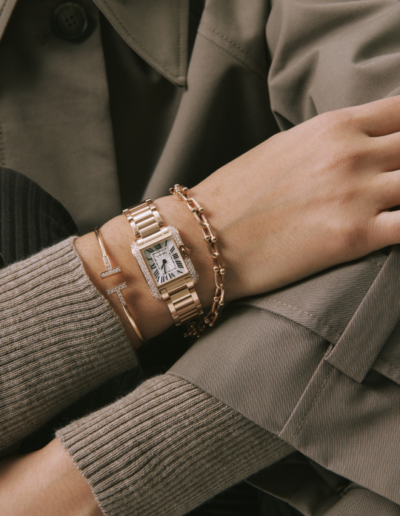DESIGNER 101
Watches 101: Terms Every Watch
Lover Needs to Know
By The Rebag Watch team, Mar 11, 2021
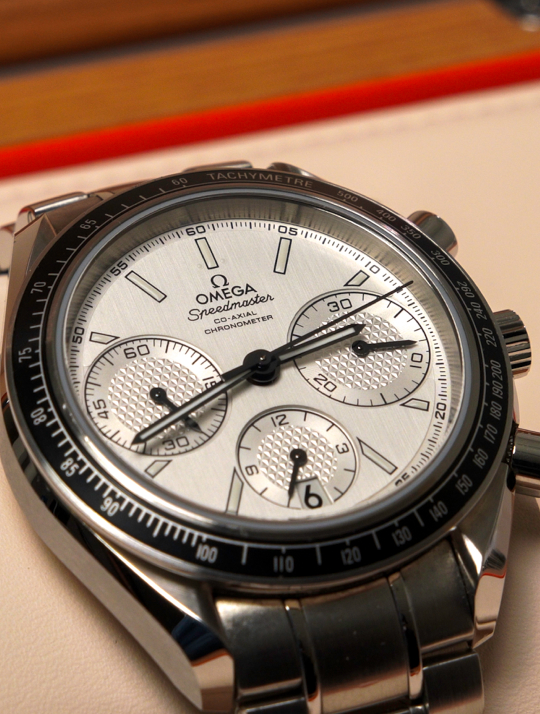
With so many types and styles of watches on the market – seriously,
so many! – it is essential to know watch terminologies and better understand their fundamental features and functions. Well, look no further! Here are some of the most common terms you’re likely to encounter.
Band: A generic term for the strap or bracelet that secures the watch to the wrist.
Bezel: The Bezel refers to the outer piece of the case which holds the crystal. Bezels may also serve as or with a complication function such as a divers bezel, tachymeter, or world time/GMT bezel.
Bezel [Diver’s]: These bezels are used to assist divers by displaying elapsed time via a one-way unidirectional rotating bezel.
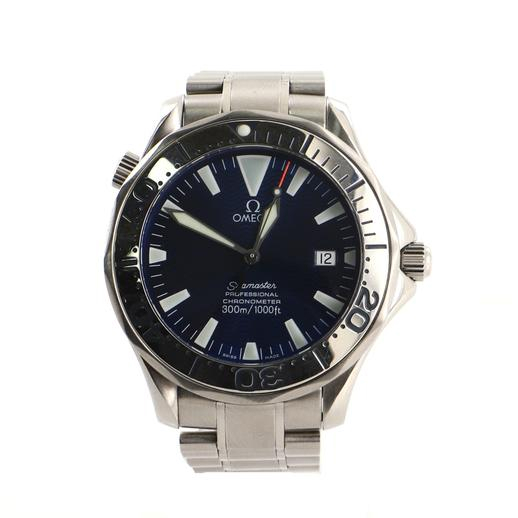
This Omega Seamaster Professional Diver Chronometer 300M features a Diver’s Bezel
Bezel [GMT]: Used in conjunction with a GMT hand to show a 24 hour secondary or “home” time display on the bezel.
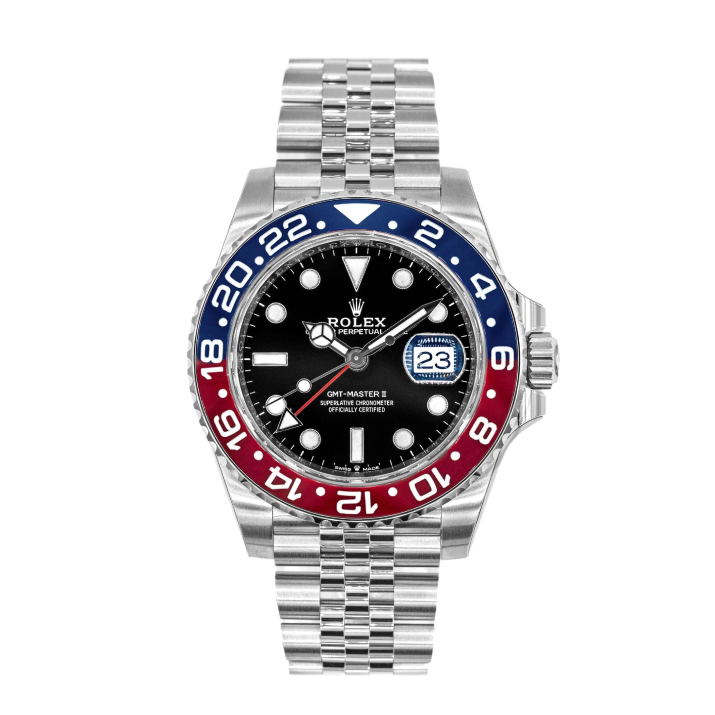
This Rolex Oyster Perpetual Date GMT-Master II Pepsi features a GMT Bezel
Bezel [Tachymeter]: Designed to allow the recording of the speed of an object over a known distance.
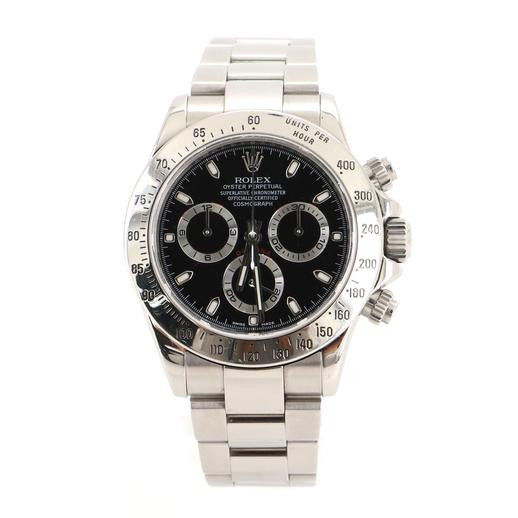
Rolex Daytona with Tachymeter bezel
Bracelet: Traditionally, a metal link “band” used to secure the watch case to the wrist. Bracelets can be made from materials such as ceramic or precious metals like gold or platinum. Bracelets are traditionally designed to be sizable and removable.
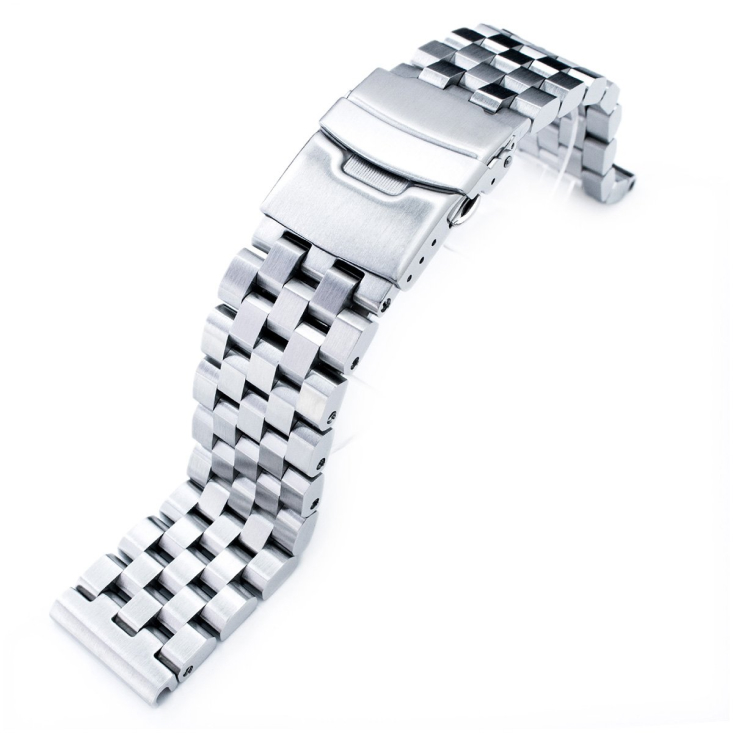
Stainless steel bracelet, source unknown
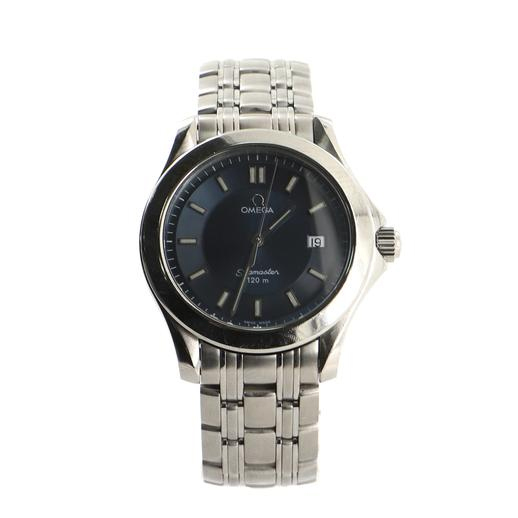
Omega Seamaster on a stainless steel bracelet
Buckle: Generic term used to close the strap and hold it around the wrist.
Buckle [Deployant]: A deployant buckle is a tri-folding buckle that has pushers to release the clasp. Depending on the style of the bracelet, this can be a hidden buckle or similar to a folding buckle. This type of buckle can also be found on higher-end straps and saves on wear and tear of the strap material.
Buckle [Folding]: A folding buckle is either a folding or tri-folding clasp. This buckle often does not have pushers to release the clasp, but rather, typically features a folding bar to hold in place.
Buckle [Tang]: Traditionally looks and functions like a typical belt buckle.
Chronograph: A chronograph is a stopwatch complication that is made up of a large independent sweep second hand, a minute and hours sub-dial; it can be started, stopped, and returned to zero via a pusher or pushers/plungers.
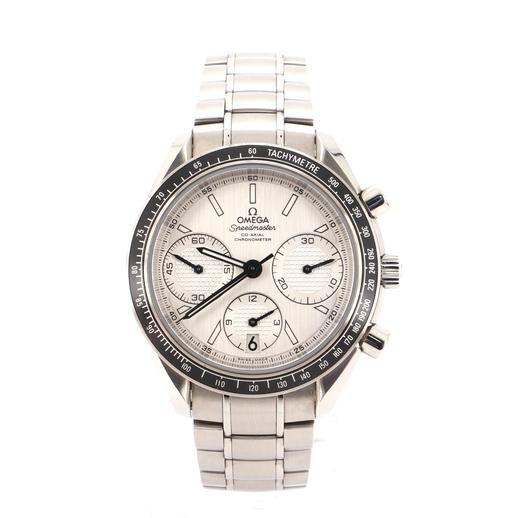
Omega Speedmaster chronograph
Complications: A complication is defined as any function on a watch that does more than showtime. An automatic winding system is one of the most common complications found in watches; Some other complication examples include chronographs, date display, and phase of the moon.
Complication [High]: High complications refer to more exotic complications such as tourbillons, perpetual calendars, minute repeaters, or even the time of sunrise and sunset in different seasons called the “Equation of Time” that can be found in watches.
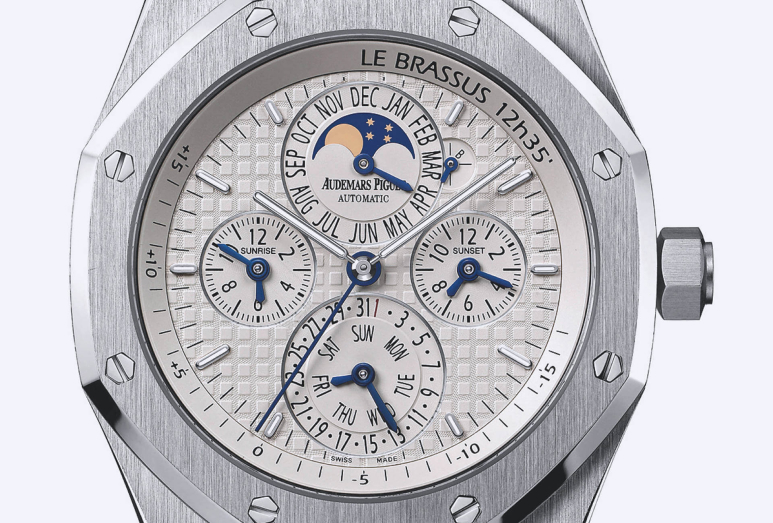
Equation of Time complication, courtesy of Haute Horlogerie
Crystal: The clear piece of material that covers and protects the dial and hands of the watch. It is traditionally made from synthetic sapphire, plastic, or mineral glass.
Date Display: A common complication that displays the date from 1 to 31, the date change normally occurs once in 24 hours. Normally at midnight.
Dial: The part of the watch that the hands display the time against, the dial normally consists of hour markers and minute markers. On a digital watch, this is often a numeric digital display.
Hands: These are the pieces that move around the dial, allowing you to read the time on an analog (not digital) watch display. Traditionally a set of hands consists of an hour hand, a minute hand, and a second hand.
Link: A metal bracelet is created using links held together. These links can be added or removed to create the perfect sizing of a metal bracelet.
Lugs: The “arms” that attach the watch case to the strap or bracelet.
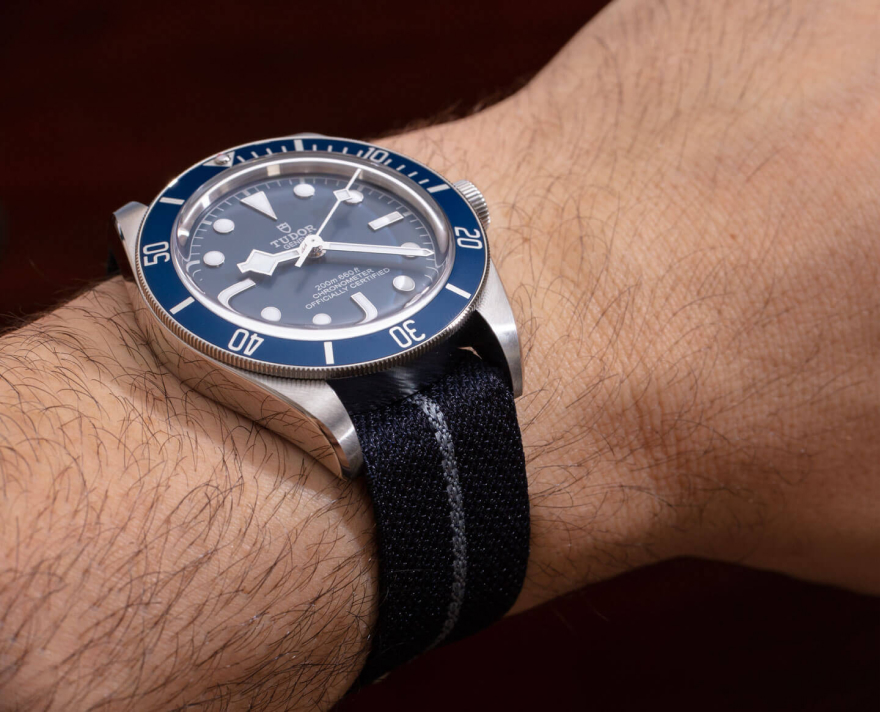
Close up on a lug, courtesy of ABlogToWatch.com
Movement: The “heart” of the watch. This refers to the mechanical or quartz timekeeping element housed within the case of the watch head. Traditionally, there are three different types of movements, quartz, manual wind, and automatic. Manual wind and automatic movements are both mechanical movements that derive their power from the mainspring of the watch. Once wound up, the mainspring provides power through the gear train in order for the watch to tell time as it unwinds.
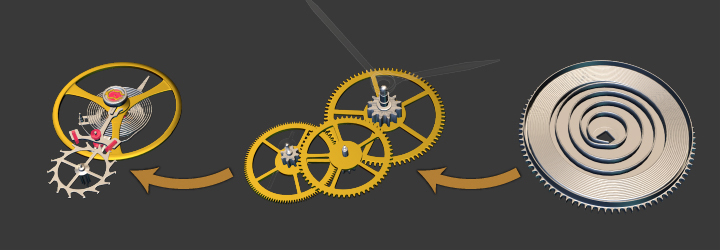
Watch gear train, courtesy of Anima Graffs
Quartz watches use the power from a battery cell to send an electric current through a circuit board to a quartz crystal. The crystal vibrates at exactly 32,768 times each second, making quartz watches among the most accurate timekeepers in the world.
If not printed on the dial or case back of the watch, you can normally tell the difference between a mechanical and quartz watch by watching the motion of the second hand as the clock runs: Automatic hands have a continuous “sweeping” motion of the second hand as it moves around the dial, while quartz watch second hands have a “stepped” movement which occurs once every second.
Movement [Automatic]: An automatic movement refers to a mechanical movement that has a “self-winding” complication. Traditionally, a rotor – or oscillating weight system – mounted to the watch movement provides additional winding power to the mainspring via the active motion of the wearer’s wrist. Like the manual wind movement, an automatic movement can be wound via the crown of the watch. While the power reserve of an automatic watch can be extended by wearing the watch daily, if the watch is not worn consistently, the power reserve will run down. If this happens, you must provide power by winding the mainspring through the crown in order to guarantee an adequate power reserve for timekeeping accuracy. Winding the crown 30 to 40 times will replenish the power reserve. Simply shaking the watch a few times and putting it on the wrist will not provide enough power.
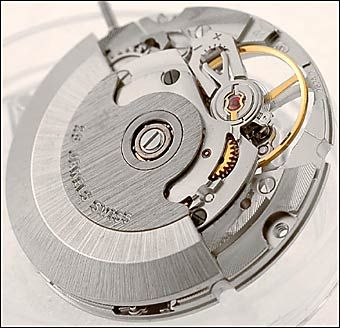
Automatic winding movement with oscillating weight, source unknown
Movement [Manual]: This type of movement requires manual winding of the mainspring via the crown in order to maintain the power reserve and timekeeping of the watch. Traditionally the average power reserve is approximately 40 to 48 hours on most manual watch movements. Meaning the watch should be wound daily to ensure accurate timekeeping.
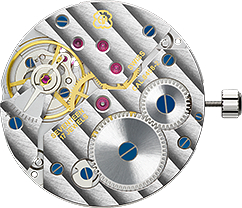
Manual wind movement, source unknown
Movement [Quartz]: Quartz movements will continue to run as long as there is sufficient power in the battery cell of the watch. Once depleted to the point that it can no longer supply power to cause the movement to function, the battery must be exchanged for a new one.

Quartz movement, source unknown
Pusher/Plunger: The pusher is similar to the crown in that it is used to control watch features or complications. Traditionally the pusher is a button on the side of the watch case that is separate from the crown and controls other functions, such as the start, stop and reset features of a chronograph.
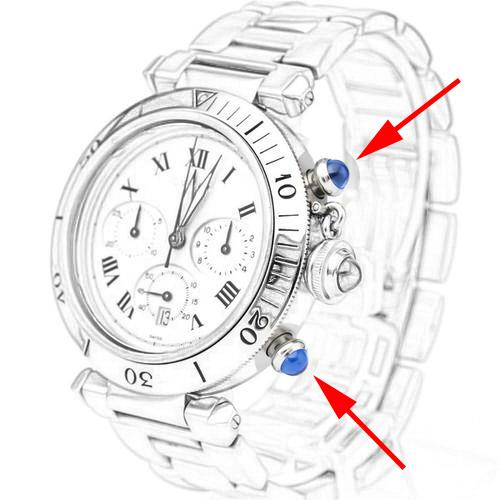
Chronograph pushers on a Cartier Pasha, source unknown
Spring Bar: Spring bars are the small, spring-loaded bars used to hold watch straps in place. They are constructed with a small spring inside a hollow tube, the ends are telescopic, allowing the ends to be pushed in, the strap put into place, and then releasing the tension causes the ends to “spring” back out and hold the watch strap to the case lugs.
Strap: The part of the watch used to secure the watch case to the wrist. It is traditionally made of leather or other materials such as leather, nylon, rubber, or satin. Most watch straps are designed to be replaceable.
Subdial: A small dial(s) inset into the main watch dial. They are mainly used on chronograph watches to record hours and minutes or for secondary functions, like displaying seconds or the date.
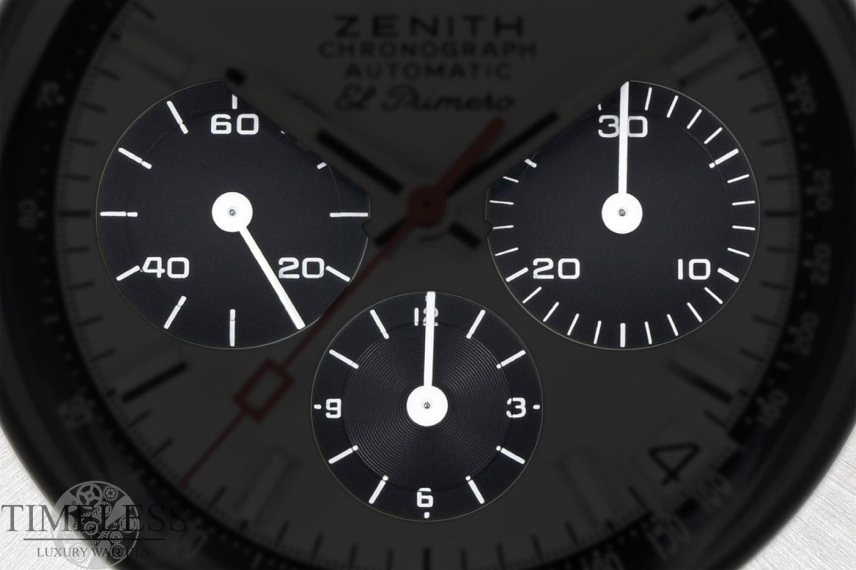
Chronograph sub-dials: running seconds at 9 o’clock, hours at 6 o’clock, and minutes at 3 o’clock (30 minutes), source unknown
Watch Head: This is the entire body of the watch, including the case, case back, movement, crystal, dial, crown, and hands. It only refers to the body of the watch; it does not include the band or buckle.
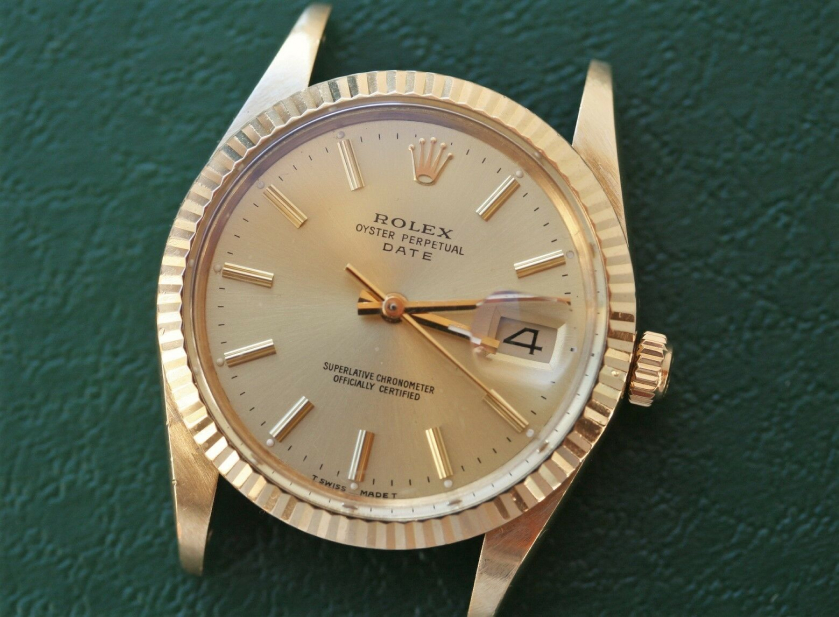
Rolex watch head, source unknown
We know there is so much more to know about watches, but we hope this brief introduction to watch components and complications has been helpful, and you will feel more comfortable shopping for and discussing watches with your friends!

